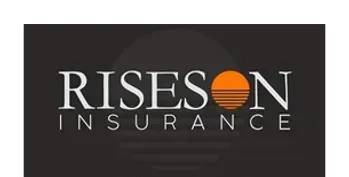
Understanding Exclusions in Insurance Policies
May 31, 2024 | Insurance
Insurance policies are crucial financial tools designed to protect individuals and businesses from unexpected losses. However, it's important to understand that not all potential scenarios are covered under these policies. This is where exclusions come into play. In this blog, we'll dive deep into what insurance exclusions are, why they exist, and the common types you might encounter in various insurance policies.
Insurance exclusions are specific conditions or circumstances that are not covered by an insurance policy. These are clearly stated in the policy document and are designed to limit the insurer’s liability for certain risks. Exclusions can apply to different types of insurance , including health , auto , home , and life insurance.
Exclusions are implemented for several reasons:
Risk Management: Insurers use exclusions to manage and limit their exposure to high-risk situations. Policy Affordability: By excluding certain risks, insurers can offer policies at more affordable rates. Preventing Fraud: Exclusions help prevent fraudulent claims by clearly outlining what is and isn't covered. Legal and Regulatory Compliance: Some exclusions are mandated by law to ensure compliance with state or federal regulations.
Pre-Existing Conditions: Some health insurance policies may exclude coverage for pre-existing conditions for a specified period. Cosmetic Procedures: Elective cosmetic surgeries typically aren't covered unless they are medically necessary. Experimental Treatments: Treatments that are still considered experimental or not widely accepted by the medical community are often excluded.
Intentional Damage: Damage caused intentionally by the policyholder is not covered. Wear and Tear: Regular wear and tear or mechanical failure is usually excluded. Unlicensed Drivers: Accidents occurring while the vehicle is driven by an unlicensed driver may not be covered.
Flood Damage: Flooding is typically not covered under standard homeowners' insurance and requires separate flood insurance. Earthquake Damage: Like flooding, earthquakes usually require a separate policy or endorsement. Neglect: Damage resulting from neglect or poor maintenance is often excluded.
Suicide Clause: Many life insurance policies include a suicide clause, excluding coverage if the policyholder dies by suicide within a specified period after policy commencement. High-Risk Activities: Deaths resulting from high-risk activities such as skydiving or scuba diving might be excluded. Illegal Activities: Death occurring while participating in illegal activities is generally not covered.
Read Your Policy Carefully: Understand the exclusions listed in your policy to avoid surprises during a claim. Ask Questions: If any exclusion is unclear, ask your insurance agent or provider for clarification. Consider Endorsements: Some exclusions can be mitigated by purchasing additional coverage or endorsements. Regular Reviews: Periodically review your policy to ensure it still meets your needs and update it if necessary.
Exclusions are a critical component of any insurance policy. While they may seem like limitations , they play a significant role in making insurance affordable and sustainable. By understanding the common exclusions and how they apply, you can make more informed decisions when purchasing and managing your insurance coverage. Always take the time to read through your policy and consult with your insurance provider to ensure you have the protection you need.
Reach out to Ben Freeman at Riseson Insurance in Tempe to discuss further.
What Are Insurance Exclusions?
Why Do Exclusions Exist?
Common Exclusions in Different Types of Insurance
Health Insurance
Auto Insurance
Homeowners Insurance
Life Insurance
How to Handle Exclusions
- Risk Management: Insurers use exclusions to manage and limit their exposure to high-risk situations.
- Policy Affordability: By excluding certain risks, insurers can offer policies at more affordable rates.
- Preventing Fraud: Exclusions help prevent fraudulent claims by clearly outlining what is and isn't covered.
- Legal and Regulatory Compliance: Some exclusions are mandated by law to ensure compliance with state or federal regulations.
- Pre-Existing Conditions: Some health insurance policies may exclude coverage for pre-existing conditions for a specified period.
- Cosmetic Procedures: Elective cosmetic surgeries typically aren't covered unless they are medically necessary.
- Experimental Treatments: Treatments that are still considered experimental or not widely accepted by the medical community are often excluded.
- Intentional Damage: Damage caused intentionally by the policyholder is not covered.
- Wear and Tear: Regular wear and tear or mechanical failure is usually excluded.
- Unlicensed Drivers: Accidents occurring while the vehicle is driven by an unlicensed driver may not be covered.
- Flood Damage: Flooding is typically not covered under standard homeowners' insurance and requires separate flood insurance.
- Earthquake Damage: Like flooding, earthquakes usually require a separate policy or endorsement.
- Neglect: Damage resulting from neglect or poor maintenance is often excluded.
- Suicide Clause: Many life insurance policies include a suicide clause, excluding coverage if the policyholder dies by suicide within a specified period after policy commencement.
- High-Risk Activities: Deaths resulting from high-risk activities such as skydiving or scuba diving might be excluded.
- Illegal Activities: Death occurring while participating in illegal activities is generally not covered.
- Read Your Policy Carefully: Understand the exclusions listed in your policy to avoid surprises during a claim.
- Ask Questions: If any exclusion is unclear, ask your insurance agent or provider for clarification.
- Consider Endorsements: Some exclusions can be mitigated by purchasing additional coverage or endorsements.
- Regular Reviews: Periodically review your policy to ensure it still meets your needs and update it if necessary.
